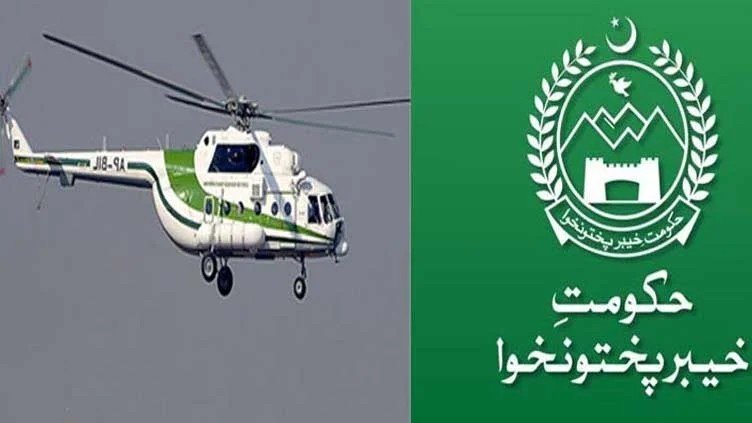In a significant and progressive move, the government of Khyber Pakhtunkhwa (KP) has transformed its large MI-17 helicopter into a fully equipped air ambulance—a first of its kind in the province and among the most advanced public-sector emergency aviation responses in Pakistan. This initiative, led by Chief Minister Ali Amin Gandapur’s administration, marks a turning point in the way emergency medical services will be delivered, especially in KP’s geographically challenging areas.
An Innovative Step Toward Accessible Emergency Care
Khyber Pakhtunkhwa is a region with diverse and often rugged terrain, where road access is limited, especially during natural disasters, military operations, or remote health crises. Recognising the dire need for rapid medical response, particularly in the northern and tribal districts, the KP government has approved and implemented the conversion of its existing MI-17 helicopter into a state-of-the-art medical rescue aircraft.
The decision to convert the helicopter was approved by the provincial cabinet in early 2025, and work on the project progressed swiftly. Health Advisor Dr. Ehtesham Ali oversaw the process and conducted test flights to ensure the air ambulance meets international operational standards.
Features and Capabilities of the Air Ambulance
Unlike standard helicopters used for VIP movement or logistics, the new KP air ambulance has been fitted with full medical emergency infrastructure. It now includes:
-
Stretcher beds for transporting critical patients
-
Advanced life-support systems, including ventilators and cardiac monitors
-
Emergency medical kits and drug storage
-
Space for trained paramedics or doctors to accompany the patient mid-air
Officials have also ensured that the helicopter can be deployed during both day and night operations, with upgraded navigation and communication systems for adverse weather or night rescue missions.
Cost and Funding
The cost of converting the MI-17 into a fully functional air ambulance is reported to be around PKR 300 million (approximately USD 1 million), funded through the provincial treasury. Given the scale of healthcare emergencies across the province, officials argue that this investment is not only justified but also necessary.
The Health Department has indicated that this air ambulance will primarily serve emergency evacuations, patient transfers from remote districts to tertiary care hospitals, and disaster response missions.
Test Flights and Initial Deployments
In early 2025, the air ambulance underwent successful test flights, demonstrating its operational readiness. According to official sources, the aircraft has already been used on a trial basis in Kurram District, where it transported critical medicines and medical staff to a remote location inaccessible by road.
Health Advisor Dr. Ehtesham Ali, during a media briefing, stated, “This is not just an aircraft; it’s a lifeline. For patients in far-flung areas, where roads are blocked or where the terrain makes travel difficult, this helicopter could mean the difference between life and death.”
Public and Professional Reception
The initiative has received praise from health professionals and civil society members alike. Many see this as a much-needed modernisation of Pakistan’s healthcare infrastructure, which has historically lacked emergency mobility, especially in rural and underserved regions.
Doctors working in public hospitals in the region expressed hope that the helicopter will reduce pressure on emergency rooms by providing quicker access to tertiary care for patients who would otherwise arrive too late for critical interventions.
Humanitarian organisations have also lauded the move, urging other provinces to follow suit, particularly in Balochistan and Gilgit-Baltistan, where similar geographic challenges exist.
Challenges and Future Plans
While the conversion of the MI-17 is a major achievement, it is just the beginning. Experts argue that for the air ambulance to be truly effective, it needs to be part of a wider emergency response ecosystem—including helipads at major hospitals, trained aerial paramedics, and a central dispatch system that can coordinate airlifts on short notice.
The KP government has indicated plans to further strengthen this infrastructure. Discussions are underway to integrate the air ambulance service with Rescue 1122, the province’s emergency response authority. Training programs for medics and pilots are also being planned to ensure the staff can operate in high-pressure airborne medical environments.
Conclusion: A Model for the Future
The conversion of the MI-17 helicopter into a full-service air ambulance is not just a technical achievement; it represents a shift in mindset—one where public health is prioritised through innovation and resourcefulness. As Khyber Pakhtunkhwa continues to grapple with natural disasters, healthcare shortages, and remote populations, such initiatives bring hope that timely, life-saving care will no longer be a luxury limited to the urban elite.
If successfully implemented and sustained, this model could inspire other provinces in Pakistan—and even neighbouring countries—to rethink how emergency care is delivered in remote and high-risk areas.
Reference: خیبرپختونخوا حکومت کا بڑا ہیلی کاپٹر ایم آئی 17 مکمل طور ایئر ایمبولینس میں تبدیل








